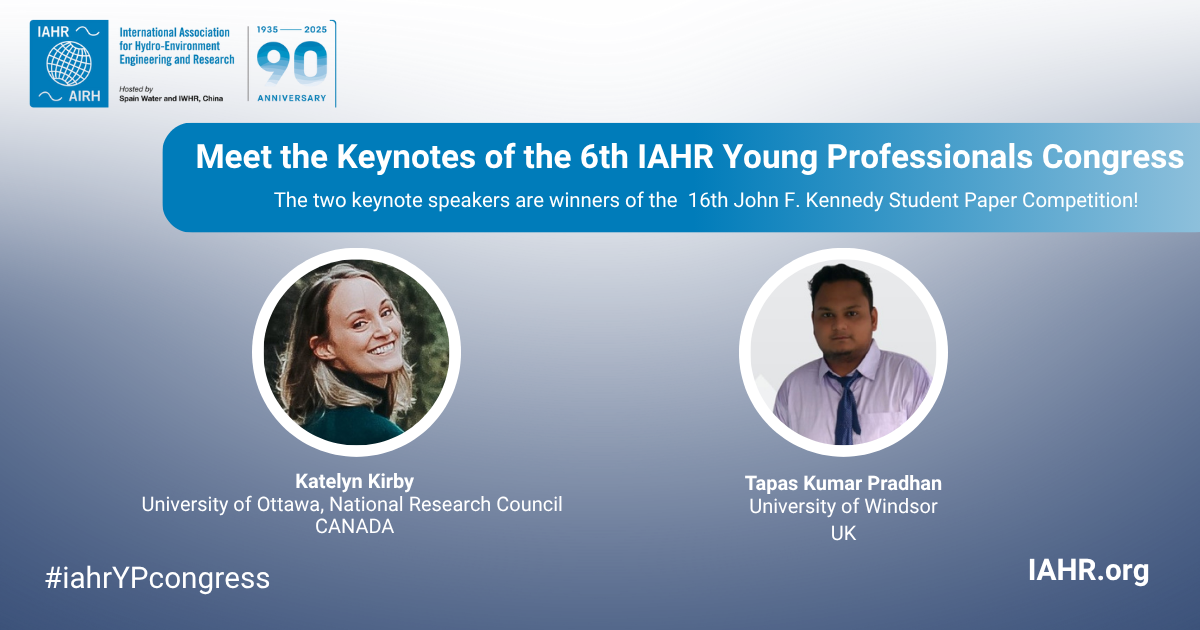Keynotes Speakers of the 6th IAHR Young Professionals Congress Announced!

Register to attend Website Keep updated
We are pleased to announce the two keynote speakers of the upcoming 6th edition of the IAHR Young Professionals Congress, both winners of the 16th John F. Kennedy Student Paper Competition, as follows:
Katelyn Kirby, University of Ottawa, National Research Council, Canada
"A High-Resolution National Database of River Widths from Remote Sensing and Cloud-Based Image Processing"
A high-resolution database of river widths was developed for Canadian rivers through advanced remote sensing techniques and cloud-based image processing. By integrating Sentinel-2 multispectral satellite imagery, cloud processing, and automated GIS methods, river widths were systematically measured across 9,500,000 square-kilometers of diverse Canadian landscapes, providing unprecedented spatial and temporal detail. Using the presented methods, large-scale, accurate databases of river widths can be developed for any geographic locations for rivers larger than 20 meters in width, with multiple measurements across seasonal conditions at each river cross section.
Tapas Kumar Pradhan, University of Windsor, UK
"Horseshoe Vortex Characteristics Near Bed-Mounted Inclined Cylinders"
Bed-mounted inclined cylinders have important applications across different fields of engineering. They are commonly seen in structural supports and offshore platforms. This experimental study investigates the influence of the inclination of bed-mounted cylinders on the horseshoe vortex (HSV) generated around them. To this end, the flow past vertical (VC), backward-inclined (BIC), and forward-inclined (FIC) cylinders were studied using the same fully-developed approach flow. Velocity fields upstream of the cylinder-bed junction were measured using particle image velocimetry at a Reynolds number based on cylinder diameter of 26,000. Mean flow analysis revealed well-defined HSV structures in the VC and BIC configurations, whereas no distinct HSV was observed for the FIC case. Instantaneous flow field analysis showed that the weakest downflow along the cylinder surface occurred in BIC due to the formation of a vortex above the primary HSV, which trapped and suppressed the downward flow. In contrast, the FIC configuration exhibited the strongest downflow, as its forward inclination provided a more streamlined path to the descending flow. Swirling strength analysis indicated that the strength of the HSV was maximum in BIC, followed by VC and FIC. Probability density functions (PDFs) and joint PDFs of velocity fluctuations identified three dominant flow conditions: zero-flow, backflow, and intermediate flow in VC and BIC, while FIC exhibited only zero-flow and backflow conditions. Joint PDFs, two-point correlation and proper orthogonal decomposition analyses further supported the presence of localized, oscillatory HSV structures.
Related